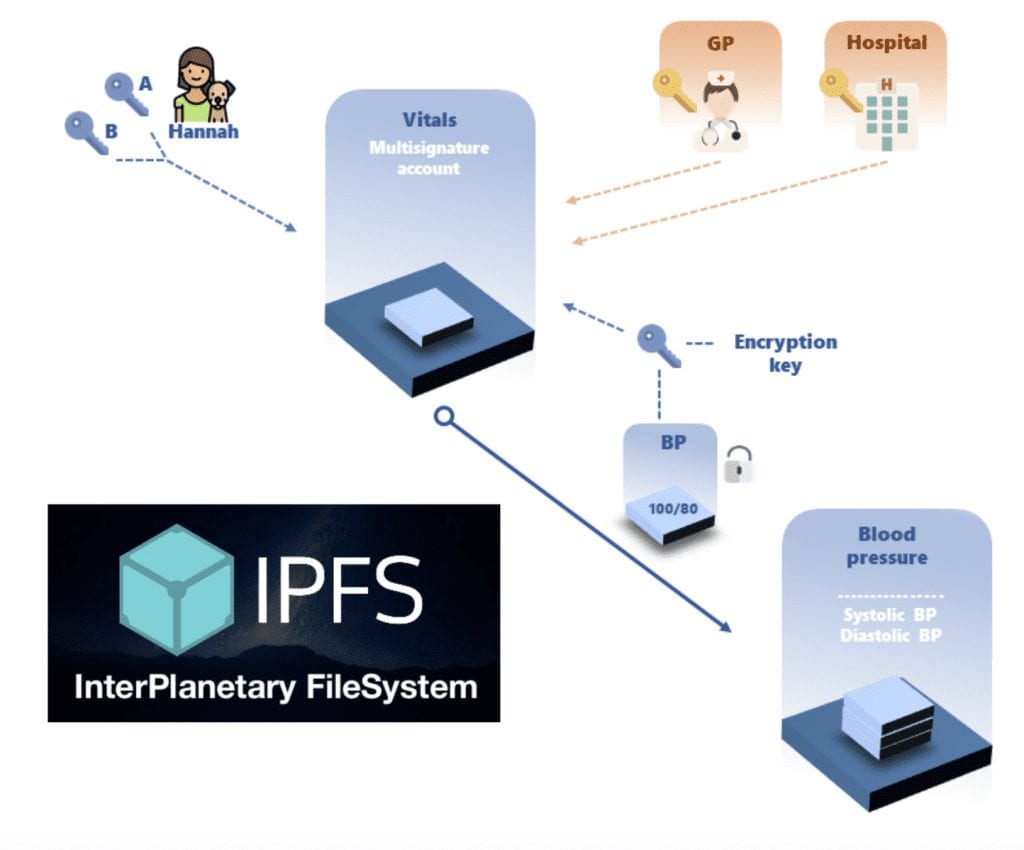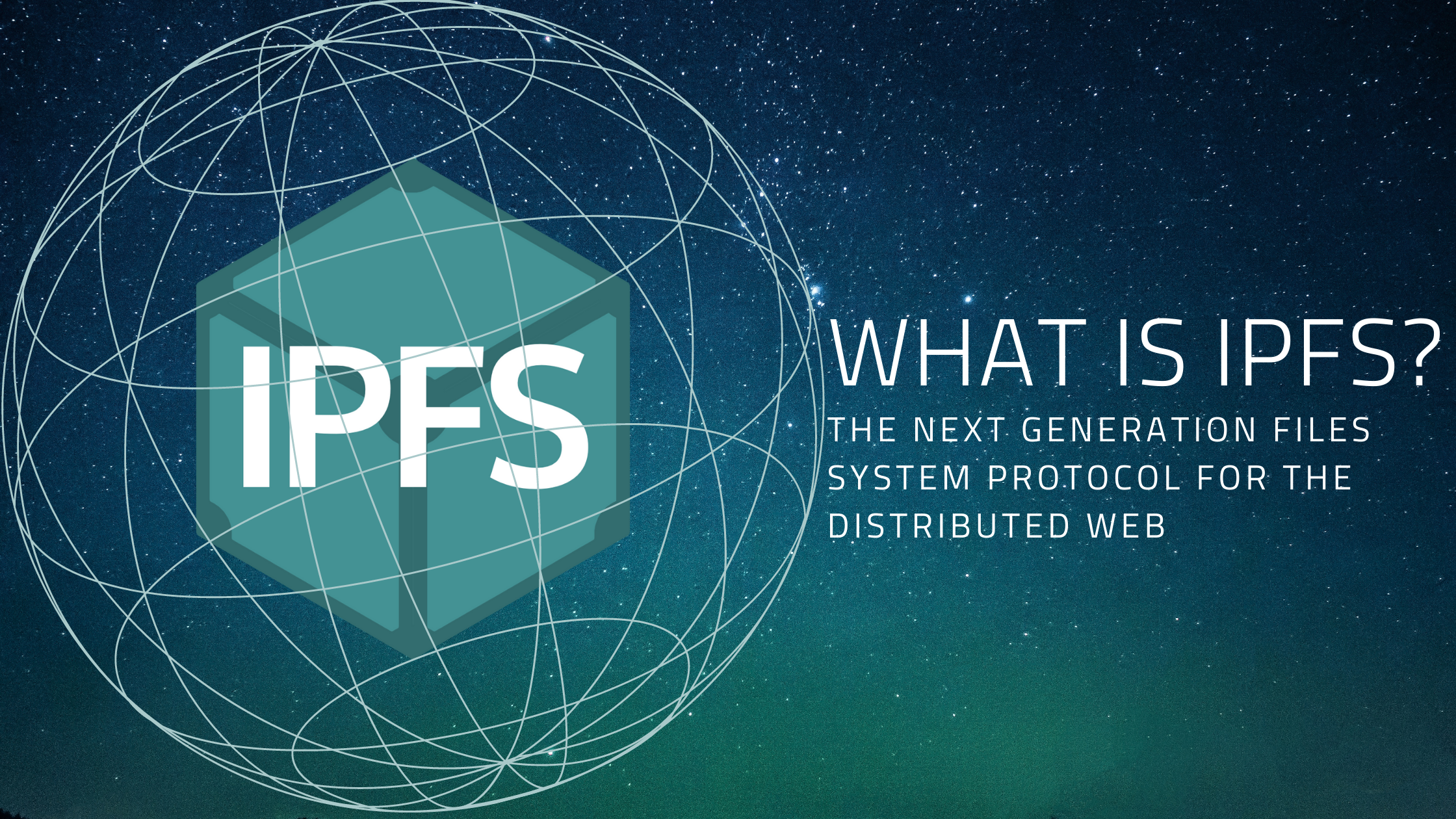For the development of the internet and effortless online content management, resilient file storage and sharing system are necessary. Dependency on a central server increases the probability of hindrance in data access and easy shutdown of data shareability by any authority with command over it.
The internet needs a distributed file system to address several issues like performance, content mutability, censorship, etc. IPFS is unique and is one of such distributed file systems that enables you to access information from multiple hosts. A trusted network like blockchain connects all of the hosts of the network.
This article introduces you to the most promising file system of the future, the IPFS. You will also know its use cases and vital statistics.
What Is IPFS?
InterPlanetary File System (IPFS) is an online file storage and sharing protocol for distributed file systems. Saying files means anything related to the web that is convertible to data bytes like the whole website, its content, mobile apps, multimedia files, and many more.
It is essentially a peer-to-peer hypermedia protocol for the internet. It helps transform the storage and accessibility of knowledge by making the web resilient, more open, and upgradeable.
When you look for data on the internet, the search engine looks for a website address with similar content. However, IPFS’s approach is content-specific, not dependent on the website address. That is why you could get your content from more than one source instead of one website.

How Does IPFS Work?
IOFS works based on peer-to-peer storage networking. You can get content from many peers scattered throughout the globe. The peers can either relay information, store the content, or do both. IPFS serves you the content you asked for depending on its cryptographic hash rather than its storage location.
The following three components are the basic principles of IPFS:
1. Content Addressing
When you perform a search on IPFS powered search engine, it uses content addressing to find that content and knows what is in it. It is similar to looking for a book in a library. You write down the title of the book and give it to the librarian.
You may not get the right book if you ask for a book by explaining its location. Someone may have already relocated the book to a new location.
Content addressing resolves this problem effortlessly. So, if you are looking for content on the web and the website owner relocated the content, you will still find that through IPFS.
For this reason, The content that will support IPFS will have a content identifier or cryptographic hash. This hash code will be unique. So, you can tell if a hacker has replaced the content by looking at its hash. As a result, spamming, phishing, and hacking incidence will also reduce remarkably.
2. Directed Acyclic Graphs (DAGs)
Mostly all of the distributed file systems, including IPFS, use a common data structure. It is known as Directed Acyclic Graphs (DAGs.) More specifically, they use Merkle DAGs. In this system, each node gets a unique identifier or hash that represents the content of the node.
IPFS uses an optimized Merkle DAG that helps it represent files and directories.
3. Distributed Hash Tables (DHTs)
IPFS uses DHT to discover the content you are looking for. To locate the hosting peer, it reads through its library of DHTs. You know hash tables as a database that contains keys and values. In a distributed files system like IPFS, this hash table is split and distributed to all of the peers. To retrieve any content from the peers of such a distributed system, you need to send queries to these peers.
The libp2p project plays a role here. This project provides DHT and also looks after peers communicating with each other. Once IPFS locates the content, it uses Bitswap to facilitate block transfer from one peer to another.
Examples of Similar Distributed File Systems
Apart from IPFS, there are many other distributed file systems. Some of these are open-source, some bear a proprietary license, and some are owned by tech giants like Google, Amazon, and Microsoft. The followings are some of the open-source distributed file systems that have the potential to reshape the internet:
1. Alluxio
Haoyuan Li created the Alluxio virtual distributed file system (VDFS) as a part of his Ph.D. Thesis from Berkeley’s AMPLab in the University of California. It provides a database abstraction layer APIs for computation frameworks. Such an API allows applications to connect with many storage points through a common interface.
2. Ceph
It is an open-source software storage system that implements object storage on distributed computer clusters. It offers a three-in-one interface for the storage of objects, blocks, and files. It offers professional data redundancy and disaster recovery through systems like storage cloning, snapshots, replication, erasure cloning.
3. Coda
It has originated from AFS2 and became popular as an advanced distributed file system. It offers many unique features for networked file systems and these are as follows:
- Operate without a network connection for mobile computing
- Anyone can obtain it freely through a GPL license.
- It delivers better performance through persistent caching from the client-side.
- In the vent of partial network failure from the server-side, operations continue at the client-side.
4. GlusterFS
It is a scale-out type networked file storage system. Several services like streaming videos, cloud computing, and content delivery networks apply this technology. The Red Hat Storage Server offers integration of Red Hat Enterprise Linux with GlusterFS.
5. HDFS
HDFS is an abbreviation for Hadoop distributed file system. It has been programmed in Java to support the Hadoop framework. It provides Java API and shell commands that are equivalent to other file systems. This file system stores larger files across many devices. It also replicates the data in multiple hosts to achieve data reliability.
IPFS and Blockchains
IPLD and Filecoin are a few closely related projects of IPFS. IPLD or Inter-Planetary Linked Data is a model for distributed data structures similar to blockchains. IPLD enables the users to store and access data of blockchain networks through IPFS.
Users who want to store data from IPFS get Filecoin as a reward. Filecoin is a kind of cryptocurrency coin. The developers of the IPLD integrated it with prominent blockchains like Ethereum and Bitcoin. Therefore, users can effortlessly interact with more than one blockchain.
IPFS also is the choice of the file system for the storage of NFT metadata or virtual assets. Decentraland stores all of its data on IPFS. It enables the virtual world platform to fetch data from multiple hosts at the same time. This increases networking performance and facilitates the faster loading of virtual assets.
OrbitDB, a popular choice for blockchain apps, DApps, and web applications that are supposed to work offline. It is a distributed, serverless, peer-to-peer database that utilizes IPFS as its data storage. For automatic sync of OrbitDB’s content database with its peers, it uses IPFS Pubsub.
How Will IPFS Reshape the Internet?
The HTTP protocol already dominates the internet’s various domains like entertainment, content management, communications, and work. Therefore, you might ask what exclusive value propositions does IPFS offers? Here is how the internet will change upon implementation of IPFS:
1. Save Money on Server Hosting
If you store your files on IPFS, you can save money on centralized server hosting and file storage devices. As an entrepreneur, you can also come up with mobile or PC-based IPFS solutions that offer savings on file storage to your users.
2. Increase the Speed of Browsers
IPFS increases the speed of data streaming or fetching as the peer nodes could be nearer to you. In conventional networked file systems, you experience a lag in data retrieval as the central server may be located at the other end of the world.
3. Privacy Protection
Browsers and servers supporting IPFS are unable to store your private data. Hence, no more annoying personalized ads and unwanted pop-ups when you are going through your content.
4. Paves the Way for a Resilient Internet
Let’s say that the servers of Wikipedia catch fire or an engineer made a huge mistake that takes down all of its content. You can still get your content from Wikipedia through connected peers if Wikipedia opted for IPFS based decentralized file system.
5. Content Censorship Becomes Tough
If the internet fully utilizes IPFS, any corporation, state, or hacker won’t be able to take down the content you need. Because there will be numerous nodes that are hosting the content, it is virtually impossible to enforce content restrictions.
Some Vital Statistics on IPFS
Many apps, websites, and browsers are deploying IPFS. Currently, 70 active projects are implementing IPFS as per IPFS’s official website. The following table shows a promising growth of IPFS in top niches
| Catagory | Number of Projects | Examples |
| Browsers | 4 | Brave, Opera, RSS3 |
| Content delivery | 17 | Alpress, Audius, BitSong |
| Data & machine learning | 4 | dClimate, OrbitDB, Qri |
| DeFi | 9 | Coinomi, Dether, Uniswap |
| Identity | 5 | ION, Zinc, Kepler |
| Integrations | 4 | MetaMask, Partyshare |
| NFTs | 3 | Yaytso, Meme Factory |
Future Ready File System
Significantly IFPS has made a successful entry into Brave. It’s a trending internet browser that offers better security and privacy from invasive ads and data theft. In addition, more than 36 M users actively use this browser for their day-to-day work. Users also get a free crypto wallet and can earn crypto coins as rewards too.
What it means is that people are liking IPFS and what possibilities it can offer. Knowing more about IPFS will help you to explore business opportunities around IPFS and its adoption in mobile apps and websites.


